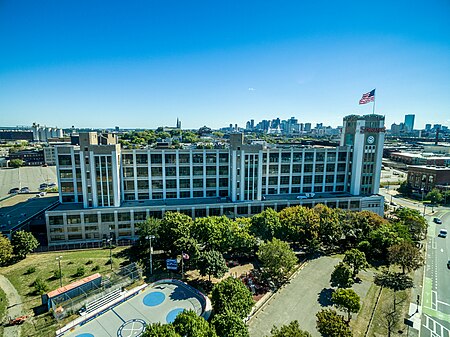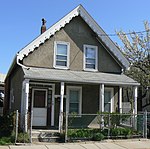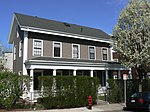Schrafft's
1861 establishments in MassachusettsAmerican chocolate companiesCharlestown, BostonCompanies based in BostonCompanies established in 1861 ... and 3 more
Confectionery companies of the United StatesRestaurants established in 1898Restaurants in Charlestown, Boston

Schrafft's was a candy, chocolate and cake company based in Sullivan Square, Charlestown, Massachusetts. The famous Schrafft's neon sign is a significant landmark in Boston, although the former factory it sits above, constructed in 1928, has been redeveloped for business accommodation. Schrafft's later expanded to form a chain of Schrafft's restaurants in New York, and a collection of motor inns and restaurants along the eastern seaboard from New England to Florida during the 1950s and 1960s.
Excerpt from the Wikipedia article Schrafft's (License: CC BY-SA 3.0, Authors, Images).Schrafft's
Main Street, Boston Charlestown
Geographical coordinates (GPS) Address Nearby Places Show on map
Geographical coordinates (GPS)
| Latitude | Longitude |
|---|---|
| N 42.384444444444 ° | E -71.072222222222 ° |
Address
Schrafft Center
Main Street
02129 Boston, Charlestown
Massachusetts, United States
Open on Google Maps











